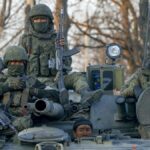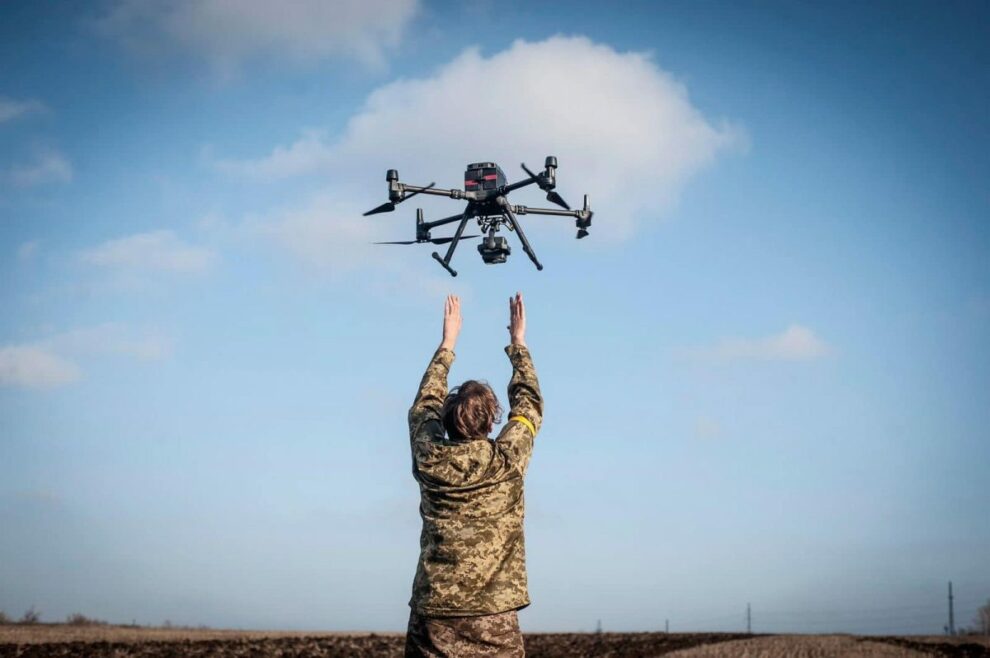When Russian jamming neutered the recon drones flown by a group of Ukrainian special operators near Dnipro in August, they turned to a new solution: V-BAT drones built to withstand the massive electronic interference used by both sides in the war in Ukraine.
“They launched from about 40 kilometers from the front, flew 100 kilometers past the front line of troops and then found these SA-11 surface-to-air missiles [on] 11 Buks, targeted them, called in HIMARS airburst rounds,” said Brandon Tseng, president and co-founder of Shield AI, the San Diego-based maker of the V-BATs.
That destroyed the SAMs—and, Tseng said, marked a big operational test for the V-BATs: flying, collecting targeting data, and relaying it to artillery units, all in the face of the most sophisticated electronic warfare tactics on earth.
Ukraine has some drones that can perform well against EW, but they work through autonomy and on-platform computing, good for one-way attack missions with whatever munitions can be squeezed onboard. But the ability to pass data quickly back to a fires solution with real power, like a howitzer or Lockheed Martin HIMARS, is essential to taking out Russian positions. This is what the V-BAT supplied to the Ukrainians, according to Tseng, who witnessed the operation first-hand.
The 300-mile range of the V-BAT, even in the face of anti-aircraft defenses, gave the Ukrainians a new view of the battlefield.
“They were able to collect intelligence that they had never collected before was because they had a long-endurance aircraft that was able to watch things for long periods of time,” Tseng said in a Thursday interview. “That absolutely blew their minds, because, while they had some aircraft, some weapon systems that could go 60 kilometers, maybe 100 kilometers, the on-station time was like, for those aircraft for like, 10,15, minutes. So when you’re comparing it against us who’s loitering around for eight, 9,10, 11 hours, you know, after we get on-station…you just actually have the time space to actually find lots and lots of targets.”
Tseng and his team at Shield AI originally brought the drones to Ukraine to test against electromagnetic warfare effects in June.
The drones proved able to work in jam-heavy environments in ways that others could not, according to a June report from the Ukrainian military obtained by Defense One.
“We flew within 1,000 meters of these jammers. No impact to our aircraft. It was wildly successful,” Tseng said.
But those June results didn’t have the persuasive effect that Tseng was hoping for.
“There were skeptics on the NATO side, on the American side, that were like, ‘You know, no one’s passed this testing. All drones fail here; you guys are going to be like everybody else.’”
They insisted on an actual battlefield experiment against the enemy. Tseng’s account was backed up by a Ukrainian operator who spoke to the Wall Street Journal on Thursday. In August, Tseng also testified before Congress on the battlefield deployment success.
There is no silver bullet that can bring Ukraine victory, Defense Department officials routinely remind the public, often when discussing why they refuse to provide certain weapons, (or withhold permissions to use them in the way the Ukrainians would like). Despite that, some common themes are emerging after years of war. Ukraine’s success against the larger Russian military is based in large part on their ability to move faster, firing off rounds and maneuvering quickly to duck Russian counterfire. But the Russians are fast learners.
The Russians are far better supplied with ammunition, a problem exacerbated by continued debates among Western allies about whether to provide Ukraine with what observers say it needs.
The V-BAT works to lessen both problems. First, its size—small enough to fit in an SUV—and vertical takeoff help the Ukrainians scoot and shoot.
“Airstrips, air fields are targeted. They’re observed. They’re watched, and so they’re just highly vulnerable points. So if your aircraft requires a runway, it’s really not a good, great place to be,” Tseng said.
And because the V-BAT can pass not just targeting data but also battle damage assessment, it helps Ukrainian forces make the most of their limited ammo.
Without EW-hardened drones, Tseng said, “they don’t know if they’re hitting things most of the time.”
Tseng said the next step is to integrate missiles onto the drone itself.
“We have launched, organically off the V-BAT, a Northrop Grumman munition called the Hatchet, which is a laser-guided munition that was a prototype capability [for] board kinetic effects, is being released late next year.”















